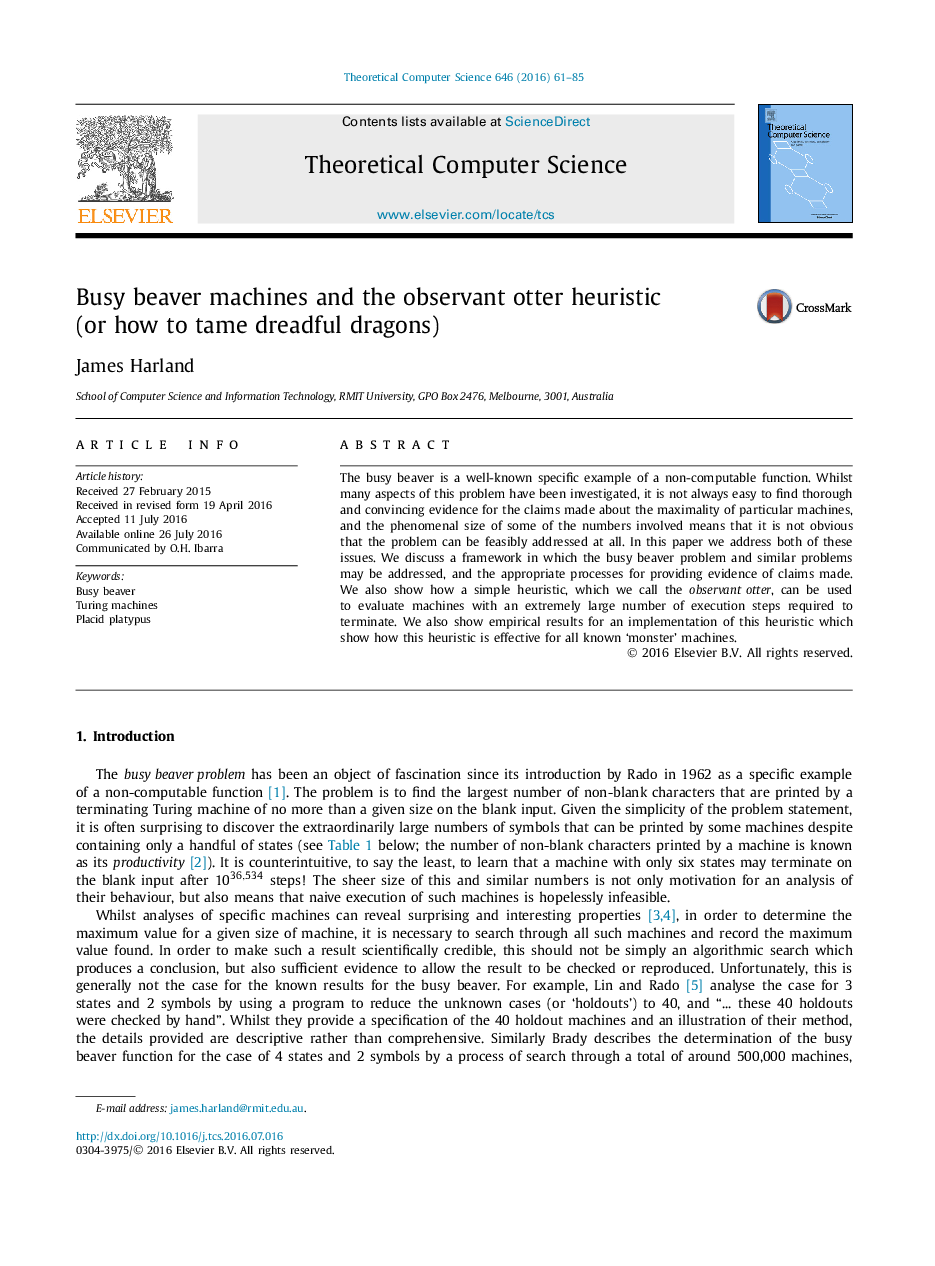| Article ID | Journal | Published Year | Pages | File Type |
|---|---|---|---|---|
| 4952501 | Theoretical Computer Science | 2016 | 25 Pages |
Abstract
The busy beaver is a well-known specific example of a non-computable function. Whilst many aspects of this problem have been investigated, it is not always easy to find thorough and convincing evidence for the claims made about the maximality of particular machines, and the phenomenal size of some of the numbers involved means that it is not obvious that the problem can be feasibly addressed at all. In this paper we address both of these issues. We discuss a framework in which the busy beaver problem and similar problems may be addressed, and the appropriate processes for providing evidence of claims made. We also show how a simple heuristic, which we call the observant otter, can be used to evaluate machines with an extremely large number of execution steps required to terminate. We also show empirical results for an implementation of this heuristic which show how this heuristic is effective for all known 'monster' machines.
Keywords
Related Topics
Physical Sciences and Engineering
Computer Science
Computational Theory and Mathematics
Authors
James Harland,
